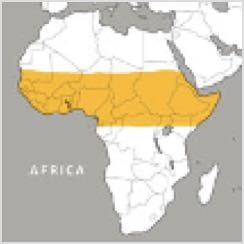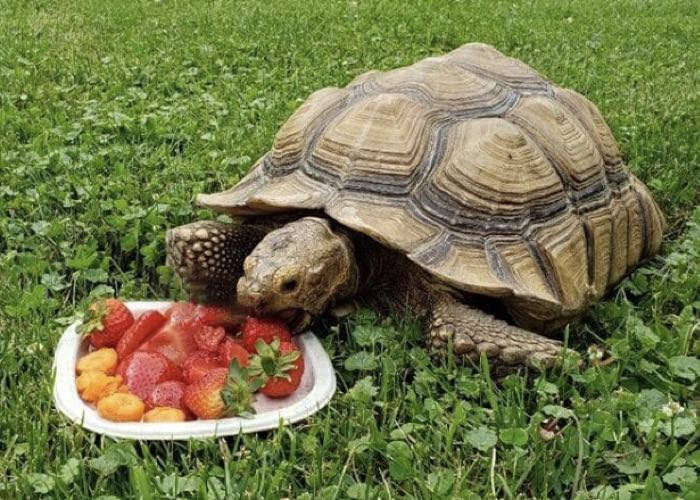African Spurred Tortoise
Centrochelys sulcate
Conservation Status: Vulnerable. They are listed as vulnerable species due to their habitats and over grazing by livestock. They also fall prey to nomadic tribes who see them as a food source. Finally, they are highly sought after for the pet trade with only the younger ones being taken. It takes roughly 15 years for these tortoises to reach maturity so the pet trade is greatly reducing the amount of successful mating taking place in the wild.
Characteristics:
- They are called spurred tortoises because of the “sticky outy” bits or spurs behind their legs.
- Females can grow up to 50 cm in length and weight 60kg. Males can grow up to 80cm in length and weigh a whopping 100kg. (That is the equivalent of 100 bags of sugar)
Lifespan: The lifespan of an African spurred tortoise is about 50-150 years, though they can live much longer.
Range and Habitat:
- They are native to the Sahara Desert and the Sahel, a transitional ecoregion of semiarid grasslands, savannas, and thorn shrub lands.
- They excavate burrows in the ground to get to areas with higher moisture levels and spend the hottest parts of the day in these burrows. This is known as aestivation.
- Burrows average 30 inches in depth but some dig tunnel systems extending 10 feet or more underground.
- Plants such as grasses and succulents grow around their burrows if kept moist and in continue to grove for the tortoise to eat if the soil is replenished with feces.

Diet:
- They are herbivores eating grass and plants.
- Their diet is high in fiber and very low in protein.
- Flowers and other plants including cactus pads can be consumed.
Behavior:
- Males can particularly aggressive and argumentative. They can often be seen ramming other males whilst letting out all kinds of sounds. They croak, grunt, and whistle. They are that aggressive that form the moment they hatch from their eggs they are trying to get one over, quite literally, on their siblings by trying to flip them on their backs.
- Activity of the African spurred tortoise depends on the season. They are mostly active during the rainy season (July to October) when food and water are available.
- They bask in the sun in the early morning to increase body temperature and provide energy for regular daily activities.
- Mating season is from September to November.
Fun Facts:
- Sulcata comes from the Latin word sulcus, which means “to furrow”. This refers to the furrows or deep lines in their shells.
- They are the third largest species of tortoise in the world. Only the Galapagos tortoise and the Aldabra giant tortoise are bigger.
- They are capable of doing weeks without food or water. When they do find it, they can consume up to 15% of their body weight.
Keeper Notes:
Clover is a female African Spurred Tortoise who was born on June 15, 2002. Clover enjoys eating grass and spending time outside in the summer.

